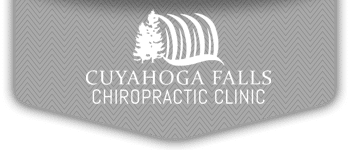What Parents Should Know about Kids’ Back Pain

What Parents Should Know about Kids’ Back Pain

Updated on November 25th, 2019 by Dr. Ryan Meehan
Unfortunately, back pain isn’t just a problem for adults. Recent studies have shown that back pain actually affects many children and adolescents. Most discomfort is not caused by serious health conditions, but it can be disconcerting for parents.
Childhood is a critical period for physical development when the bones and tissues in kids’ bodies are constantly under stress. Parents are surprised, however, when their otherwise healthy kid complains of a sore back. Most of us associate back pain with old age. In reality, research has found that nearly 34% of children can experience this kind of discomfort in the course of a year. Naturally, this percentage increases along with the age of the child; by 15 years old, the rate can be as high as 70%. Some factors that raise the risk for back pain include being overweight, carrying backpacks, and participating in competitive sports.
Find out more about the sources of back pain for kids, other signs and symptoms that are cause for concern, and what parents should do to get their child appropriate medical care.
Why Is My Child's Back Hurting?
Don’t panic. There are many reasons that your kid may complain of a sore back and not all of them are serious. The possible diagnoses range from non-specific pain and muscle strain, to conditions like scoliosis. Read below to understand why your child may say his or her back hurts and an overview of the available treatment options.
Non-Specific Pain
Aside from regular growing pains, some children may experience dull, aching pain and stiffness. They may feel this type of discomfort come and go, or notice it after slouching or standing for an extended period of time. Kids may feel non-specific back pain because of poor posture, inactivity or physical strain. If it persists, X-rays and physical exams may be required to rule out more serious problems. Then, the doctor or pediatrician may recommend lifestyle changes for exercise and diet, prescribe physical therapy to strengthen core muscles, and/or chiropractic adjustments to treat the pain.
Muscular Pain
The most common source of back pain for adolescents is muscle strain from overuse, poor conditioning, or bad posture. Imaging is often not useful for making a diagnosis for muscle pain. The first treatment recommendations should be rest and decreasing the level of physical activity to give the child time to fully recover. Additional treatment may include physiotherapy, chiropractic care or massage therapy.
Stress Fractures
Sharp back pain with sudden onset could be a symptom of a stress fracture in the spine. This type of spinal injury occurs most often among adolescents. Spondylolysis is the most common type of stress fracture especially among young people doing athletic activities where the back can be hyperextended. These include sports like gymnastics, diving, football and wrestling. Fractures on both sides of the spine can lead to vertebral misalignment or a spinal slip, known as spondylolisthesis.
Although it may never heal completely, this type of childhood injury does not necessarily correlate to back pain as an adult. Stress fractures can be treated without surgery. Your child’s doctor may prescribe a back brace to be worn for a number of months, physical therapy exercises, anti-inflammatory medication to manage pain, or steroid injections.
Herniated Disc
Though not as common in adolescence as in adulthood, children can have disc herniations. Children tend to have more flexible discs, yet trauma and forceful injuries can damage them. When this important cushion between the vertebrae ruptures, it can push on the spinal cord or nerves. This leads to pain, numbness, and tingling sensations in the extremities. MRI imaging is usually required to diagnose a herniated disc. Before turning to surgical solutions, pediatric patients are advised to treat disc injuries with rest, physiotherapy to increase mobility, and chiropractic adjustments.
Infection
Toddlers and young children sometimes contract infections which attack the spin or discs. This type of illness can be difficult for doctors to identify because symptoms are vague and similar to the flu, such as fever and back ache. Localized inflammation seen in imaging and lab testing which shows that the body is fighting an infection are key. Then, treatment usually only requires rest and antibiotics to clear away the infection.
Spinal Misalignment
Back pain may be the first symptom of a spinal deformity. The most common which affect children are scoliosis and Scheuermann's kyphosis disease. Scoliosis generally presents as an S-shaped curve in the spine which becomes noticeable during the period of growth prior to puberty. Scheuermann's kyphosis is associated with a humpback curve in the spine which develops soon before or after puberty. Treatment options include observation, wearing a brace, physical therapy, chiropractic care, and surgery for severe cases.
When Should Parents Worry About Back Pain?
It’s normal for parents to worry, but it’s also important to know what signs to look for in order to understand the seriousness of your child’s pain. You should seek medical assistance if your child complains of back pains AND:
- Is less than 4 years old;
- Has a fever;
- Discomfort is persistent;
- Pain is increasing or spreading;
- Muscle weakness, numbness, or tingling are felt in the arms or legs;
- The child is less active than usual;
- Walking and engaging in normal activities has become difficult;
- Has bowel or bladder problems; OR
- The child has neurological impairment, such as difficulting talking or coordinating movement, or a lack of reflexes.
These warning signs may not signify a serious health condition, however, they are an indication that further medical attention may be needed.
Exams to Request for Adolescent Back Pain
Your pediatrician or chiropractor should begin with a complete medical history and physical exam. It’s important to discuss when the pain started, if it was associated with an injury or activity, where it’s located, and the progression of pain. Additionally, the doctor should ask about any other symptoms that may be related.
A thorough physical exam should look at the child’s posture and for signs of abnormal spinal curvature and deformation. The child may be asked to stand, walk or bend over in order to check for abnormalities. Further exams may include X-ray, CT or MRI imaging of the neck and spine, bone scanning, sensory analysis, reflex testing, and blood tests.
Get more helpful information from the experts: When Should Your Child See a Chiropractor?
Helping Patients of All Ages in Cuyahoga Falls
Take the time to get more information about the Physiotherapy & Rehab Services that Cuyahoga Falls Chiropractic Clinic provides for children and adults. Contact our office to set up your first consultation.

